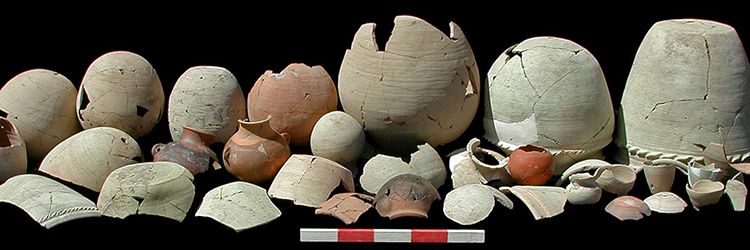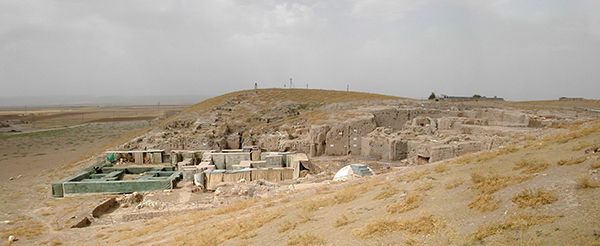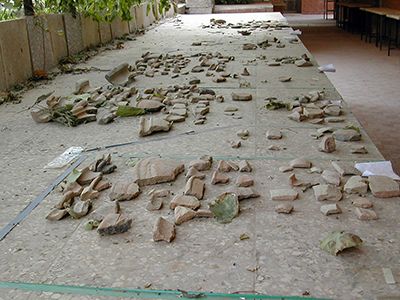Pottery is a common artifact at archaeological sites all over the world. Pottery can tell us a lot about the people who made it, and the addition of X-ray fluorescence (XRF) to the archaeologist’s toolkit provides information that can’t be observed with the naked eye.
Yale University Professor Ellery Frahm published a paper in the Journal of Archeological Science, “Ceramic studies using portable XRF: from experimental tempered ceramics to imports and imitations at Tell Mozan, Syria.”
Professor Frahm studied the ceramic wares of Northern Mesopotamia and Mozan, Syria using the Vanta™ handheld XRF analyzer. Since XRF is a nondestructive method of elemental analysis, it’s an ideal tool to develop a deeper understanding of ancient ceramics and what they can tell us about ancient civilizations.
Ancient ceramics
Results
Professor Frahm analyzed pottery samples from Tell Mozan in Syria. One of the research questions was whether the pottery was made locally.
The Vanta handheld XRF enabled the researchers to analyze 34 elements in the pottery. They used these data to determine that much of the pottery, including two pieces designed to imitate high-end, nonlocal pottery, was actually made with local clay. Some of the other pottery may have been produced at nearby settlements located a short distance from Tell Mozan.
The researchers demonstrated that distinctions between locally made and imported ceramics can’t always be made by eye and that XRF can be used to provide a more nuanced understanding of ceramic assemblages.
If you want to learn more about the project, check out the abstract to Professor Frahm’s paper below.
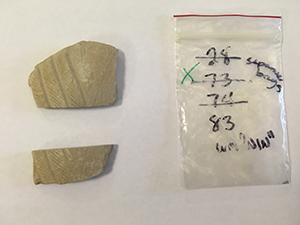 | 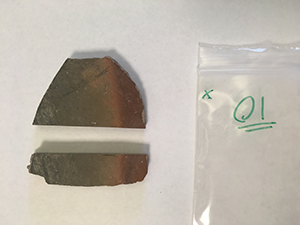 |
Ninevite V ware (left) and bichrome ware (right)
Abstract:
Studies of Northern Mesopotamian complex societies have long been predicated on ceramic wares, whereby ceramic variation is thought to reflect cultural variation. There is, however, an increasing appreciation for the role of imitation, itinerancy, and other phenomena in the distribution of ceramic styles. Much of this newfound nuance is due to chemical studies. Increasingly ceramics have been studied using portable X-ray fluorescence (pXRF). The utility of pXRF in ceramic research relies on being able to interpret the data in behaviorally meaningful ways. Thus, one approach to considering the efficacy of pXRF for ceramic studies proceeds from understanding the ways in which clays and tempers act as variables and influence the data in ways that reflect past behaviors. First, this study uses experimental replicas to exert systematic control over individual parameters (e.g., temper size, volume), allowing a better understanding of their influence. Second, this study considers Bronze Age wares at Tell Mozan in northeastern Syria. The experimental ceramics and Tell Mozan sherds are technological products that retain chemical evidence of choices made during their production. In the experimental ceramic set, a predicted phenomenon (e.g., the “dilution” effect from temper) occurred as expected, and elemental data differentiated clays and tempers selected for their manufacture. In the archaeological assemblage, elemental approaches established that distinctions between imports and locally made imitations are not always apparent by conventional means, and the use of pXRF is one way to overcome current shortcomings as well as contribute new insights.
Check out the paper’s highlights
Learn more about Yale’s archaeological XRF ExoLab
Related Content
Portable GPS-XRF Protocols for Field Archaeology
Portable XRF Technology for Archaeometry
Understanding X-Ray Fluorescence
Get In Touch
